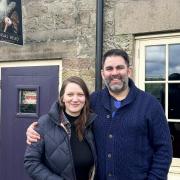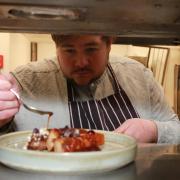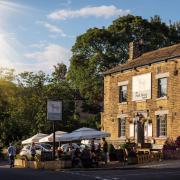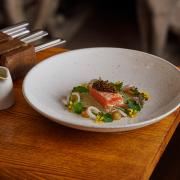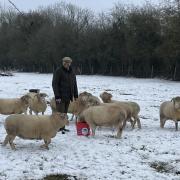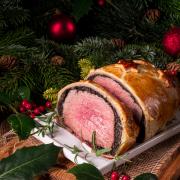Andrew McCloy explores the country inns offering a wonderful blend of history and hospitality

‘There is nothing which has yet been contrived by man, by which so much happiness is produced, as by a good tavern or inn.’ So said Dr Samuel Johnson, the 18th-century essayist born in Lichfield and a frequent visitor to Derbyshire’s many fine public houses.
From grand coaching hotels to humble roadside cottages, bustling town centre taverns to the village inn, nowhere is the county’s rich variety of pubs more evident today than in the Peak District. Bound up in these intriguing, handsome and sometimes quirky places are stories every bit as tasty as the stuff that foams out of their pumps.
Take, for instance, the Barley Mow at Kirk Ireton, south of Wirksworth, a striking 300-year-old listed building whose sense of timeliness is due to a succession of long-serving publicans who liked to keep things just the way they were. A previous landlady spent her entire life at the pub, all 90 years of it, and in 1971 resisted decimalisation by insisting that customers pay in ‘old money’ and using a biscuit tin for a cash till. Even until quite recently the barrels of beer were racked behind the bar in the traditional fashion.

Barley mow was the name given to a rick of barley from which ale used to be brewed and, like common local pub names Wheatsheaf, Plough and Bull’s Head, reflects the important role of farming. However, sometimes these pubs ended up catering for man and beast alike. During especially rough winter weather on the exposed Dark Peak moorland it was not uncommon for straw to be strewn on the floor of the tap room of the Fox House Inn, near Longshaw, so that sheep could take overnight shelter as well as shepherds. Another time, a local shepherd fell asleep in front of the pub fire, exhausted from a day spent branding sheep, but with the pitch still wet on his breeches he woke up later with his crossed legs stuck together!
The Peak District’s lead mining heritage is also reflected in traditional village pubs like the Miner’s Standard at Winster, named after the so-called standard dish used by miners to measure their ore, as well as the ubiquitous Miners’ Arms in Brassington, Carsington and Eyam. A few, like the Bull’s Head at Monyash, hosted the miners’ Barmoot Court which adjudicated on mining disputes. Miners were no doubt fond of slaking their thirst and there were plenty of publicans who were eager to take their money. At one time Wirksworth had as many as 50 pubs and alehouses and even a village like Winster boasted over 20, although allowing miners to store explosives on the premises was not always a good idea. A Winster alehouse called the Derbyshire Sally was blown up by accident in 1785.

Although car parks are rather more essential than good stabling these days, sitting inside the cosy interior of the Cheshire Cheese Inn at Hope takes you back to the time when the pub was a stop-over for packhorse teams carrying loads such as salt from Cheshire. In the lower bar there are old cheese hooks on the wall and it’s said that packhorse men often paid for their lodgings in cheese. You can also follow in their footsteps by visiting excellent Packhorse Inns at Little Longstone, Hayfield and New Mills.

Other customers turned up on foot, sometimes from a long way away. In the 15005-1600s travelling drapers walked from Scotland to visit Peak District farms and villages in order to sell their tweeds and woollens. Today they’re commemorated in the name of the Scotsman’s Pack pub at Hathersage.
Later still, it was the turn of the stagecoach, when pubs like the Chequers Inn on the steep road out of the Derwent Valley at Froggatt became well-known staging posts and a place to change tired horses. Cobbled town centres across Derbyshire clattered with the sound of hooves and carriages. The Royal Oak at Chapel-en-le-Frith became an important departure point for a celebrated pair of stagecoaches called Peak Ranger and Celerity, while Buxton’s two main coaching inns were said to have worked out a mutually beneficial system. Passengers journeying south on the Manchester to London route breakfasted at the White Hart, while on the return journey they took evening dinner at the Eagle and Child.
Nowadays the pubs of the Peak District are destinations in their own right, places to enjoy tasty food and drink and even better scenery. Both the Lathkil Hotel at Over Haddon and the Millstone Inn near Hathersage boast fine views across the National Park while you will find many pubs with beautiful, quintessentially English backdrops such as the Derwentwater Arms which overlooks the cricket ground at Calver. However, for the widest vista over your pint glass you need to travel to the Barrel Inn at Bretton, located on a prominent ridge above Eyam. At 1,250ft (381m) it’s Derbyshire’s highest pub and not surprisingly the walls of this 400-year-old former farmhouse are rather thick and it’s not unusual to find the fire lit in summer. In the notorious blizzards of winter 1947 the pub was completely snowed in for almost three weeks.

By contrast, the well-appointed Greyhound Hotel that dominates the market place at Cromford is a grand and showy affair that was built by Arkwright in the late 1700s to impress visiting businessmen. The mill workers weren’t allowed inside and instead kept out of sight at the more humble Boat Inn around the corner!
Many pubs in the Peak District are connected to and indeed some still owned by local landowners, such as the Cavendishes of Chatsworth. But instead of the usual corporate logo of a brewery chain, in their case simply look for the elegant ‘Chatsworth blue’ paintwork of estate pubs like the Duke of Devonshire in both Beeley and Pilsley. At nearby Bakewell the Manners family of Haddon Hall have given their name to several establishments, most notably the Rutland Arms hotel in the town centre which was the birthplace of the eponymous pudding.
Plenty of pubs claim to have a resident ghost, but spirits in the bar take on a new meaning at the Castle Inn at Castleton and the Crispin at Ashover which are supposedly haunted by multiple apparitions. Some customers take it more seriously than others, though, including a team of paranormal experts with sophisticated equipment who once camped overnight in the bar of the 17th-century Olde Gate Inne at Brassington and were supposedly spooked by all manner of unusual goings-on. An equally historic, ivy-covered inn is the Old Eyre Arms at Hassop, near Bakewell, where your pint and ploughman’s may be interrupted by the sight of a ghostly Cavalier descending long-gone stairs behind the bar.

Whether you’re a pub connoisseur or just enjoy going out, there are Peak District pubs for every conceivable taste. From award-winning fine dining at The George at Alstonefield or the Old Hall Inn at Whitehough to live music venues like the Fishpond at Matlock, with its very own pub choir. If your penchant is for locally-brewed real ale try the Royal Oak at Hurdlow, Old Poets Corner at Ashover or Buxton Tap House; or check out the growing number of so-called micropubs in Derbyshire’s town centres, like the Joiner’s Arms in Bakewell.
Despite everything that’s happened to them this year, the welcome from mine host is as warm as ever and there are still entrepreneurs and communities across the Peak District prepared to keep our pub heritage alive. The Blind Bull at Little Hucklow, near Bradwell, has recently been restored and re-opened by a young couple convinced (rightly) that there will always be an appetite for a well-run country pub offering quality food, drink and good old-fashioned conviviality. And don’t forget the community-owned Angler’s Rest at Bamford, incorporating the village post office and cafe, showing that the pub can still be the hub for local people and visitors alike. It’s time to raise a glass to them all - cheers!
The second edition of Andrew McCloy’s book ‘Peak District Pubs: a pint-sized social history’ is published by Gritstone Publishing later this year.
Never miss a story from Derbyshire Life. Follow us on Facebook, Twitter and Instagram.






